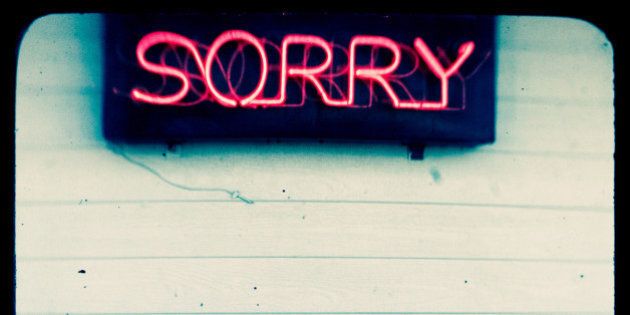
Have you accidentally set fire to your neighbour's shed? Drove over her kid's skateboard while running late to work? Set fire to your neighbour's shed on purpose?
If you have — really, who hasn't? — then you'll need to dig out the Canadian's weapon of choice in all circumstances: the apology. And lucky for you, a new study has identified six elements required to craft an effective sorry.
They are:
1. Expression of regret
2. Explanation of what went wrong
3. Acknowledgment of responsibility
4. Declaration of repentance
5. Offer of repair
6. Request for forgiveness
The study, led by Roy Lewicki of Ohio State University, tested the effects of apologies containing anywhere from one to all six of the elements among 755 people.
The participants were given a scenario where they are the manager of an accounting department looking to hire someone. That someone has messed up in a previous job. The participants then received different apologies he/she gave for that mistake and graded them.

This apology has all of the six elements. That's a perfect apology right there. You can take this one to the apology bank. (Photo: Getty Images)
Researchers found the most effective ingredient in an apology was taking responsibility for the mistake. The second most helpful component was an offer to fix the problem.
“Our findings showed that the most important component is an acknowledgement of responsibility. Say it is your fault, that you made a mistake,” Lewicki said.
“One concern about apologies is that talk is cheap. But by saying, ‘I’ll fix what is wrong,’ you’re committing to take action to undo the damage."
The study found the least helpful element was asking to be forgiven. “That’s the one you can leave out if you have to,” said Lewicki.
One caveat is that these apologies were statements participants read, so tone of voice will make a difference.
“Clearly, things like eye contact and appropriate expression of sincerity are important when you give a face-to-face apology,” Lewicki said.
Also On HuffPost:
